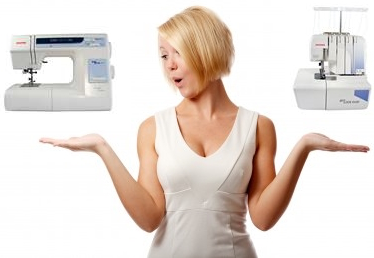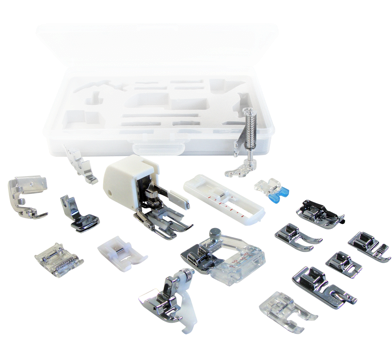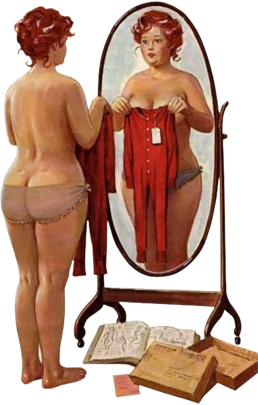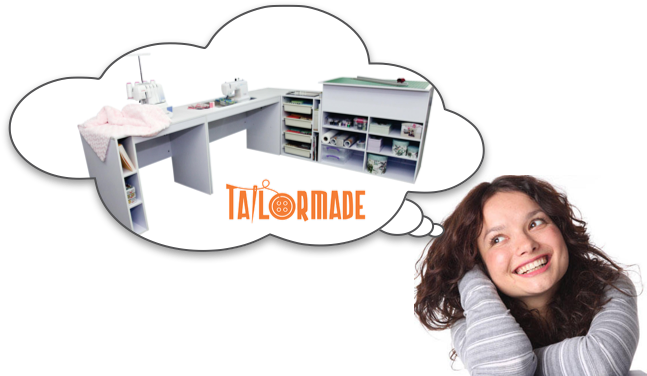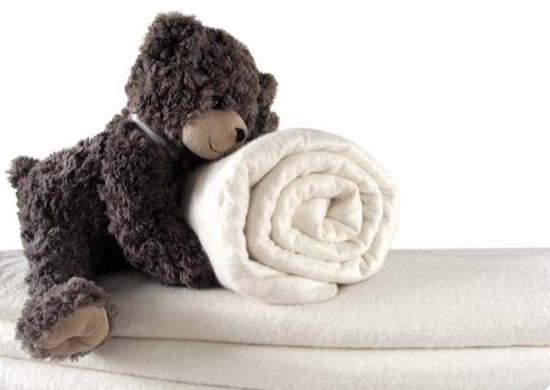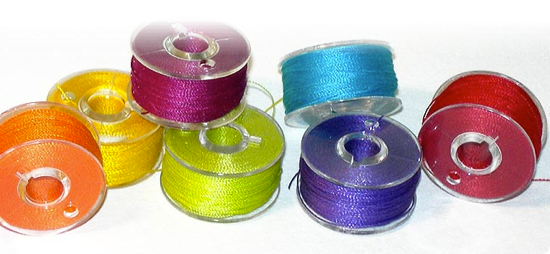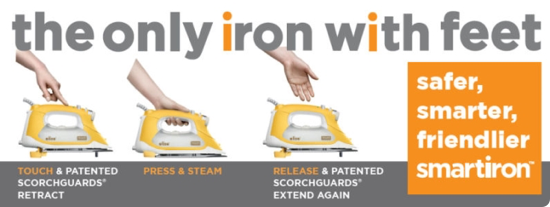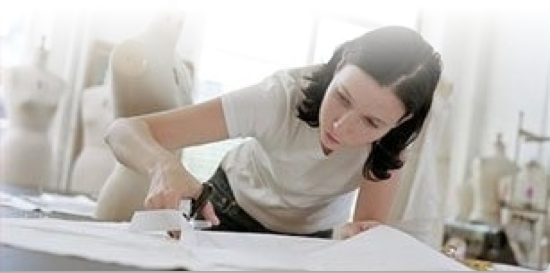
Quilt Batting: Get to know your wadding for Quilting
By the time you’ve completed your first quilt top, you’ll need to choose a suitable batting for your quilt – whether you plan to do the quilting yourself or sendng it away for long-arm quilting.
If you’re new in the world of patchwork, you’d probably be shocked when you go to buy your batting for the first time: “Wow – they are so THIN! And so many types – they look all the same.”
What to do… Right?

Quality Quilt Batting doesn’t come cheap.
So it’s important to find one that’s right for you – read on.
When it comes to types of quilt batting (or wadding, as they are often called in UK, Australia & NZ), first you need to know what they are NOT.
Patchwork Quilt batting is NOT…
- a doona insert – you cannot put it staright into a duvet cover and use it like that
- a thick & fluffy filling like what you might use in a sleeping bag or puffer jacket
- a finished material – it needs to be stitched into a quilt before you can use it
So – What is Quilt Batting?

Batting is the soft layer between the quilt top and the backing – tyically known as a “quilt sandwich”.
See diagram on the right.
Your batting gives the quilt dimension and definition, and adds warmth and comfort. As much as they appear the same, different types of batting can make a quilt flat or puffy, stiff or drapable – depends on your preference.
Historically, quiltmakers used whatever natural fibers on hand for the quilt’s middle layer – as a filling – with warmth as the main consideration. Think wool rovings and loose cotton.
Early batting of this type contains nothing but layered fibre with no other added processes.
The fibre is not bound together in any manner and is very easy to quilt. The major issue with this type of batting is potential for migration and shifting. This type of batting will tend to bunch and shift between the quilt lines if not quilted as close as 1/4 – 1/2 inch spacing, and still clump up over time with daily use and regular washing. Not what you want.
These days, quilt battings made for the patchwork world are more reliable, because of how they are mde.
Constructions – How they are made
Modern quilt battings are made in two ways:
- Needle-punched
- Bonded

Needle-punched battings are made similarly to felt – where loose fibres have been put through a machine
that has
millions of needles (but no thread), and these fibres are being “punched” into a fine base cloth – known as
“scrim” – before being rolled into huge rolls.
Scrim is a thin, non-woven base layer that provides structure for loose fibre to cling on to, locks in fibers to prevent bearding / piling. The Scrim also gives the batting strength and body. Excellent for quilting.
Having the scrim in your batting is essential. ALL needle-punched waddings / battings contains scrim, though in varying weight and drape. You might find that some battings feel like there’s a layer of interfacing embedded in there, and others are barely detactable.
Either way – by the time your quilt is made, the scrim will no longer be noticeable because it would be enclosed inside and become part of the fabric.

Bonded batting is made differently all together.
The fibers are bonded together by either thermal or resin method.
Thermal bonding has a low melt fiber blended with standard polyester to hold it together. This can allow bearding but doesn’t break down with washing and dry cleaning as fast as resin bonded batting.
Resin bonded batting is made from a variety of fibers including polyester, cotton, and wool. Resin is applied to both sides then dried and cured. This makes it resist bearding better than any other batting.

Pros & Cons
While bonded battings tend to have a cloud-like softness and higher loft (i.e. thicker), the manufacturing process and added resin / melted fibre can change the way that natural fibre behaves. That means you may not gain the full benefit of breathability and absorbency from cotton, wool or bamboo. Great for hand quilting though.
Needle-punched battings appear felt-like. They tend to be stronger and denser with lower loft (i.e. thinner and flatter). While you do benefit more from the natural fibre, some may find it more challenging for hand quilting – depending on the scrim and overall density. Best of machine quilting.
Fibre Types – What they are made of
There are so many fiber choices when it comes to batting – perhaps too many.
Different fibers all have unique characteristics that will effect the appearance and feel of your finished quilt. Here are just a few fiber choices you may want to try:

Cotton is a natural choice for many quilters because we’re already working with cotton fabric. It has a low loft, drapes beautifully, is soft, cuddly, warm and natural. When in doubt, go for cotton.
However, cotton will always have a tendency to shrink within your quilt, which produces a soft, crinkly effect on the surface, which adds a lot of chracters with a “well-loved” feel. This is terrific for bed quilts, but probably not the best choice for wall hangings that needs to retain its sharp corners and hangs straight.
Of course, there is always the option to simply never wash the quilt (if it was meant to always hang on the wall) or pre-wash. More on that later.
Bamboo is a wonderful fibre for batting because it is harvested from a fast growing plant – and makes it a low carbon footprint product. It is amazingly soft with a silky feel, drapes beautifully and low loft.
Bamboo batting is ideal for use in humid conditions because it dries 3 times faster than cotton batting and naturally resistant to mold or mildew growth.
Similar to cotton, bamboo batting also has a static grab that holds onto fabric so it is easy to handle in the preparation of your quilt sandwich prior to quilting. While it has a scrim, some quilters are happy enough to hand quilt it because of the softness.
These battings tend to have a bit of shrinkage, so you may wish to use them in projects that have a soft, crinkled vintage feel. They’re a great choice for summer time bed quilts and lightweight throw quilts. Perfect for warmer climates.
Super warm and soft, wool is a great choice for winter bed quilts. The natural spiral in the wool fibre forms large air pockets and traps air – which is why it retains warms while still breathes. Wool is well-known for wicking moisture away, so it is a practical choice for quilts that will be used regaularly.
Depending on how its made, and the weight of the scrim – different brands of wool battings vary a lot in weight and feel. Wool battings that are bonded can feel a lot softer and fluffier with much higher loft, compare to needle-punched wool battings – which are denser and resembles wool felt.
One of the best chracteristic of wool fiber is the resilience – that deosn’t hold creases so your quilts will always bounce back smooth, even when folded up tightly for months. For this reason, wool is a very popular show quilt batting.
Be mindful with washing 100% wool batting though – because wool fibre “felts” easily, and could turn into lumps instead of staying soft. Be sure to follow manufacturer’s instructions.
This batting is an unusual blend – and has the benefits of both wool and cotton fibres. It is soft to touch and drapes better than the popular wool/poly batting. It has the warmth of wool with the softness of cotton. It still resembles felt and has low to medium loft.
A popular and reliable choice for show quilts, this batting has a lower shrinkage to 100% Cotton and is more washable than 100% Wool. That means it is also a practical choice for quilts that will be used regularly.
While polyester is a synthetic which never sound as good as natural fibre), it has virtually no shrinkage and produces
quilts that can hang stunningly straight on a wall. This batting is also extremely stable and a perfect choice
for special quilting techniques – like trapunto – that relies on the batting holding it’s shape perfectly.
A good quality, low-loft polyester batting makes an idea choice for quilts that sustain the most amount of use, and needs regular washing for hygenic reasons. Baby quilts, for example. Other popular uses include charity quilts that are made for the homeless and animal shelters.
NOT to be confused with….
While our polyster batting IS 100% poly – it is NOT to be confused with the high loft polyester wadding – like Dacron – which is intended for the upholstery industry as a filling material.
This kind the
wadding is commonly mistaken for quilt wadding by non-quilters or newbies, and it is really difficult to quilt
and doesn’t play nicely with your lovely patchwork cotton fabric – so best to avoid if you intend to make a traditional
patchwork quilt.
However, high-loft batting mimics the look of down, and it is also often used in tied quilts. So if that’s the kind of interior decorating project you’re making, then by all means go for it!
Characteristics to Consider
Bearding (also known as “migration”)
When the fibers separate and start working their way through the weave of the fabric, escaping the quilt, and giving a beard-like appearance on the surface of your quilt. This is especially obvious when you use a pale colour batting inside a dark colour quilt. Use a good quality batting made by reputable brands to avoid bearding.
Drapability
How a quilt feels and hangs after being quilted. Good batting will allow your quilt to drape around your shoulders following the natural curve of your body without being too stiff. The density or sparseness of the quilting and the loft of the batting will also affect the drape, or relative stiffness or softness, of the finished quilt.
Loft
Different loft levels result in different appearances in a finished quilt. In general, the higher the loft the harder to machine and hand quilt.
The term “loft” refers specifically to the thickness / puffiness of the batting, and not strictly relating to the fibre type in the batting itself.
For example, cotton fibre by nature is generally low-loft, but it can be blended to achieve a higher loft -
especially for a bonded batting product. Polyester is traditionally made into high-loft wadding – such as Dacron
– though low-loft poly batting is available now for ease of quilting, and still produces a soft and drape-able
quilt.
The best kinds of loft in the patchwork world is Low to Medium. This kind of batting adds texture, gives enough “puff”, and provides some warmth, while still easy to handle and lovely to use.
Resiliency
This is the batting’s ability to regain its original shape – how quickly it can spring back when unfolded and how it resists creasing. Wool fibre is great for this.
Warmth & Absobency: Cotton battings absorb moisture, making them cool in the summer and warm in the winter. Wool battings provide warmth with little weight.
Washability & Shrinkage
Polyester and wool battings resist shrinking, while cotton can shrink from 3 to 5 percent. Some quilters prefer the puckered, antique look that results when batting shrinks.
Should you pre-wash your batting prior to quilting?
Generally – NO. Espeicially wool.
It’s best to only wash your quilt when it is ALL finished, so the fibres in the batting are encased inside your fabric and not exposed – to avoid damaging the batting.
If you really must avoid shrinkage, you can pre-wash cotton and bamboo batting – but NOT wool – because it can turn into felt. In any case, shrinkage isn’t an issue for wool and poly batting.
Here’s how to prewash cotton / bamboo batting:
- Use cool water and mild detergent, soak for 15 mins
- Squeeze out excess moisture by rolling in a dry towel
- Then air-dry by lying flat. Expect about 4% to 8% shrinkage
Without pre-washing and pre-shrinking, you will achive a vintage, softly wrinkled look and feel in your finished quilt. This is a desired effect that makes cotton or bamboo batting popular among quilters!

Points to Consider
How Will Your Quilt Be Quilted?
Will you machine quilt it? Or hand quilt it?
Generally, hand quilters prefer battings that do NOT contain scrims – which means the traditionally preferred choice for hand quilting would be bonded battings.
Though some of the modern needle-punched battings now contain a very fine scrim, and some quilters are happy to hand quilt – especially with large running stitch in perle cotton.
For machine quilting, needle-punch battings tend to be easier to handle because the scrim gives body and structure to your batting, and holds the shape better.
How Will Your Quilt Be Used?
Before you make your final batting choice, consider how your quilt will be used.
Is it a baby quilt that will be washed and dried extensively? Will it be placed on a child’s bed and get pulled and tugged? Or, are you making a wall hanging that needs to maintain sharp, crisp corners?
Or are you making a quilt that you want to drape loosely over a bed and tuck beneath the pillows? Is it an heirloom project that will be used sparingly and only laundered once every few years? Or is it a decorative item that will never be washed? Is it a table runner that needs to lie extremely flat?
These are the considerations that will help you make the right decisions.

How Much Batting to Buy?
Most of the time quilt batting is sold by the meter, off a roll. You can also buy pre-cut bed size portions.
Unlike doonas and sheets – batting sizes are NOT standard, and there is no such thing as exact measurements. Because patchowrok quilts tend to be generous compared to mattress or bed size, and people often want some over-hang when the quilt is finished.
Most importantly – you always need to allow some excess for trimming after quilting.

Measure the width of your quilt top. Add 4-6 inches each side to the measurement and this should be enough.
If you plan to make a few quilts, it is always BEST value to order by the whole roll.
Happy Quilting!
xoxox
P.P.S. Ready to Grab some
fabric so you can get started?
https://www.sewmucheasier.com/pre-cut-fabric/
Better yet - you can enjoy the Buy More & Save Deals:
Charm Packs:
Add Any 4 to Cart (and the cheapest one is
FREE)
Jelly Rolls
:
Add Any 3 to Cart (and the cheapest one is
Half Price)
Layer Cakes
:
Add Any 3 to Cart (and the cheapest one is
Half Price)
Fat Quarter
*,
Fat 1/8
:
Add 2 to Cart (cheaper one gets
20% Off)
*Note* Excluding Fat Quarters Under $100



